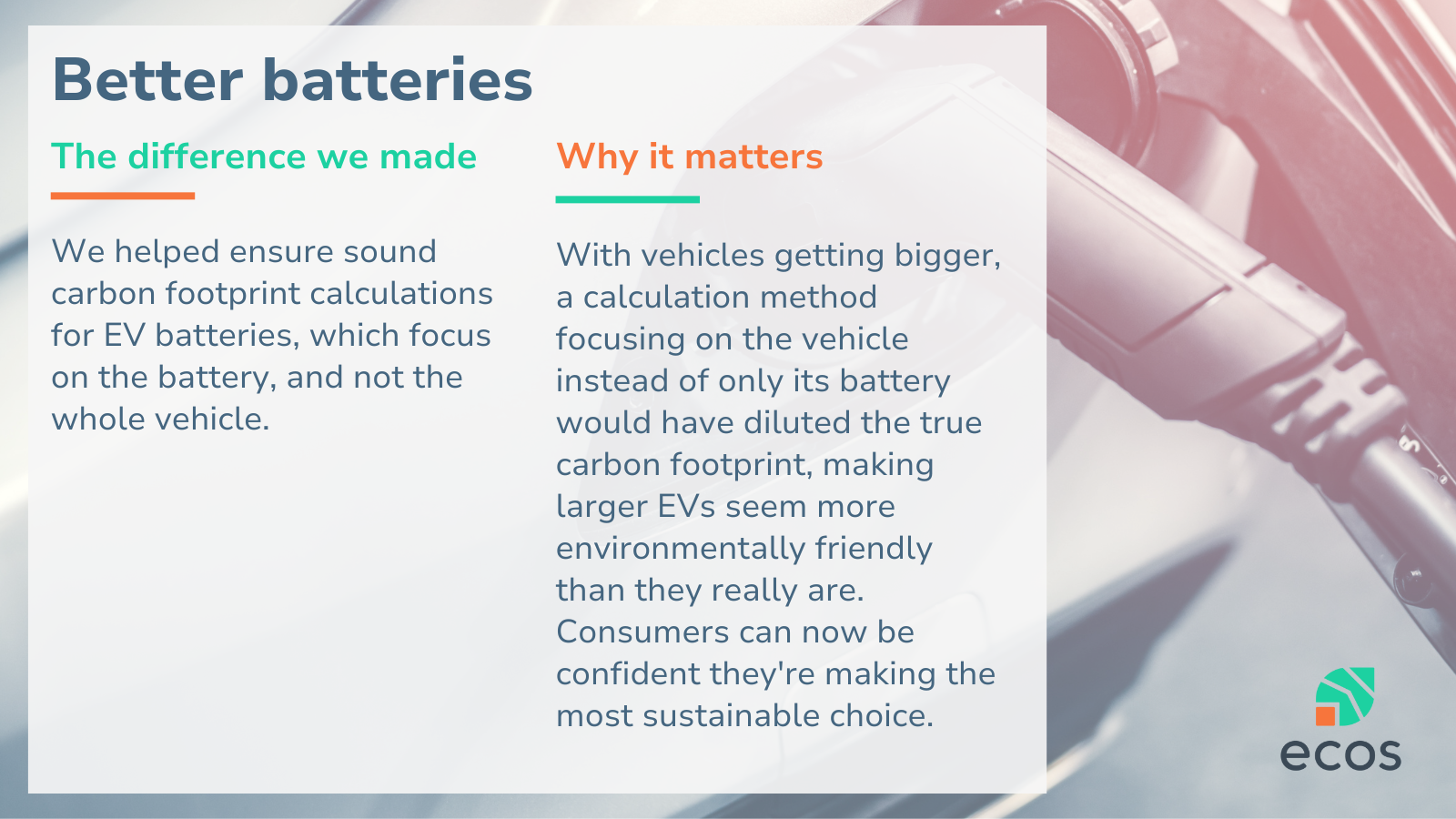Better batteries: Calculating the true carbon footprint of electric vehicles
For batteries to have a low carbon footprint, they must be durable, repairable, reusable, and recyclable—with no materials used unnecessarily. But how can consumers know if that’s the case or not? For every carbon footprint claim there is a method to calculate it. This year, ECOS made sure one such method for electric vehicle batteries was revised to avoid greenwashing. Read how!

As the world decarbonises and electrification becomes more widespread, batteries (and the materials needed to manufacture them) are in high demand, especially for electric vehicles (EVs). But how sustainable are they really? The answer to that depends on how their environmental impacts are calculated.
In 2024, ECOS succeeded in making sure the carbon footprint calculations for EV batteries are sound — and focus on the battery, not the entire vehicle. Part of the implementation of the EU Battery Regulation, this new Delegated Act will help to prevent greenwashing. It will also discourage customers from buying oversized vehicles. As a result of our work, consumers can also now be more confident they are making truly sustainable choices when it comes to their cars.
Science-based arguments won the day
Initially, the European Commission had proposed to base the carbon footprint calculation of EV batteries on the vehicle, not the battery itself. This would have been a significant flaw because it risked promoting large, inefficient vehicles over smaller ones. Bigger vehicles require bigger batteries with a higher energy use and increased material footprint. Focusing on the vehicle could have diluted its battery’s true carbon footprint, making larger EVs seem more environmentally friendly than they really are.
As well as this, the initial draft didn’t require manufacturers to publicly disclose the absolute carbon footprint of their batteries – in other words, their environmental impacts throughout their entire lifecycle. This non-transparent approach would have left consumers without the information they needed to compare battery sustainability across vehicles, making it impossible for them to make the most informed choices.
In collaboration with our members (including T&E, DUH, and EEB), other NGOs, and progressive industry, we made sure that science-based arguments won the day. Thanks to our advocacy, the revised methodology now starts with the battery, not the vehicle, and considers critical factors like energy capacity and years of operation. It also requires absolute carbon footprints to be publicly reported, enhancing transparency and ensuring manufacturers can now be held accountable for the true environmental impacts of their products.
What’s next?
The revision of this carbon footprint methodology was part of the implementation of the EU’s ambitious Battery Regulation, adopted back in 2023, with very strong contributions from ECOS. In 2024, we kept a close eye on this file, providing full analysis of the EU Battery Regulation, and outlining what still needs to happen during implementation to ensure that a truly circular economy for batteries in Europe is realised.
This is still the beginning of the journey, but we’re on our way to more sustainable batteries.


